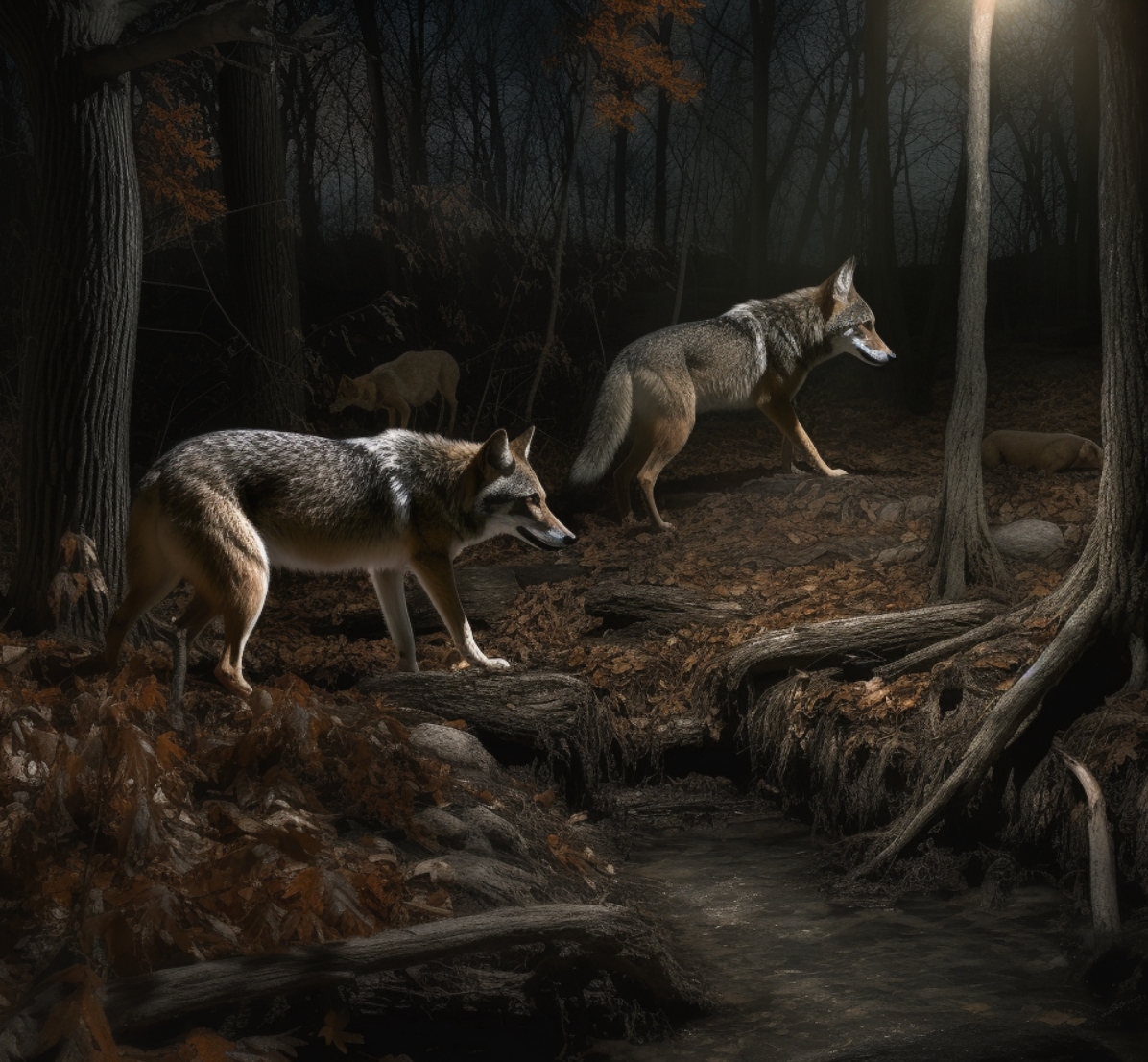You might have heard spine-chilling stories about coyotes prowling at night, but do coyotes come out during the day? Surprisingly, the answer is yes! In this comprehensive guide, we’ll explore the world of coyotes and their daytime activities. From understanding their behavior to learning how to protect your property, this article has got you covered. Let’s dive in!
The Myth of the Night: Coyotes and Daytime Activity
Contents
Contrary to popular belief, coyotes don’t just lurk in the shadows. These adaptable creatures are more than capable of venturing out during daylight hours. In fact, their daytime activities can be attributed to various factors, such as:
- Availability of food: If food is scarce, coyotes may hunt during the day to find a meal.
- Urbanization: As urban areas encroach on coyote habitats, these animals learn to adapt and become more active during daylight hours to avoid human interactions.
- Seasonal changes: Coyotes may be more active during the day in certain seasons, such as mating season or when raising their pups.
Understanding Coyote Behavior: Key Insights
To better understand why coyotes come out during the day, let’s take a closer look at their behavior:
- Hunting habits: Do coyotes hunt in packs? While coyotes are often thought of as pack animals, they typically hunt alone or in small groups. This makes it easier for them to stalk their prey and catch it without alerting other animals.
- Speed and agility: How fast can coyotes run? Coyotes are incredibly agile and fast runners, reaching speeds of up to 43 miles per hour. This speed, combined with their stealth, makes them formidable hunters.
- Vocalizations: Why do coyotes scream? Coyotes are known for their eerie vocalizations, which they use to communicate with other coyotes or to announce their presence to potential prey.
Protecting Your Property: A Step-by-Step Guide
Now that you know coyotes can be active during the day, it’s essential to take measures to protect your property from these clever creatures. Here’s a step-by-step guide on how to keep coyotes at bay:
- Build a coyote-proof fence: How to build a coyote fence involves constructing a fence with a height of at least 6 feet, as coyotes can jump quite high. Consider adding a roller bar or coyote roller at the top of the fence to prevent them from climbing over.
- Eliminate food sources: Keep garbage cans securely closed, and don’t leave pet food outside. Also, avoid feeding wild animals, as this attracts coyotes.
- Scare tactics: How to scare coyotes away includes using motion-activated lights, sprinklers, or noisemakers to deter them from your property.
- Remove potential hiding spots: Trim bushes and shrubs to eliminate hiding spots for coyotes.
If you encounter a coyote on your property, it’s important to understand how to react. In most cases, coyotes are afraid of humans and will flee when confronted. However, it’s crucial to know how to handle a coyote encounter and take the following steps:
- Make yourself appear larger: Stand tall, wave your arms, and make loud noises to scare the coyote away.
- Do not run: Running can trigger a chase instinct in coyotes. Instead, maintain eye contact and slowly back away.
- Use deterrents: Carry a whistle, air horn, or pepper spray to use as a deterrent in case the coyote becomes aggressive.
Coyotes After Dark: Understanding Their Nocturnal Behavior
Although coyotes do come out during the day, they’re primarily nocturnal creatures. Nighttime is when they’re most active, and understanding their behavior can provide insight into their daytime habits.
- Nighttime calls: How to call coyotes at night involves using specific sounds, such as distressed animal calls or coyote vocalizations, to attract them. Hunters and wildlife enthusiasts often use these techniques to locate and observe coyotes.
- Seasonal activity: When are coyotes most active? During winter, coyotes are more likely to be active during the day, while in summer, they tend to be more nocturnal. Their activity patterns may also change during mating season and when raising pups.
Dispelling Common Coyote Myths
Let’s address some common misconceptions about coyotes to get a clearer picture of these fascinating animals:
- Do coyotes hibernate? Coyotes do not hibernate. They remain active throughout the year, even in colder climates.
- Can coyotes be domesticated? While coyotes can’t be domesticated, they’re intelligent and curious animals that can adapt to living close to humans. However, it’s essential to remember that they’re still wild animals and should be treated with caution.
Coyotes and Their Place in the Ecosystem
Coyotes play a crucial role in maintaining the balance in their ecosystems. As predators, they help control the population of smaller animals, such as rodents and rabbits. To understand their position in the food chain, it’s essential to learn about their predators and prey:
- Predators vs. coyotes: Predators of coyotes include larger animals such as bears, mountain lions, and wolves. Humans are also considered predators, as they may hunt coyotes for population control or sport.
- What eats coyotes? Apart from their primary predators, other animals that may eat coyotes include eagles and large reptiles such as alligators. In some cases, coyotes may even resort to cannibalism when food is scarce.
Final Thoughts
So, do coyotes come out during the day? Absolutely! As highly adaptable creatures, coyotes can be active during daylight hours for various reasons, such as food availability or urbanization. By understanding their behavior and implementing preventive measures, you can protect your property from these cunning animals while appreciating their essential role in the ecosystem.
Keep in mind that while coyotes are fascinating creatures, they are still wild animals, and interactions with humans should be minimized. Educating yourself about their habits and behaviors is the key to coexisting peacefully with these incredible animals.
Frequently Asked Questions
What does it mean if you see a coyote during the day?
Seeing a coyote during the day might indicate that it’s searching for food, adapting to urban environments, or responding to seasonal changes. While they’re primarily nocturnal, coyotes can be active during daylight hours for various reasons.
How do you know if a coyote is around?
You can identify the presence of a coyote by looking for tracks, scat, or other signs such as chewed bones or carcasses. You might also hear their distinctive vocalizations, which include yips, howls, and barks.
How do dogs act when coyotes are around?
Dogs may become agitated, bark, or whine when they sense a coyote nearby. They might also become more alert, sniff the air, or stare in the direction of the coyote. It’s essential to keep your dog on a leash and supervise them closely when coyotes are in the area.
How strong is a coyote bite force?
A coyote’s bite force ranges from 250 to 300 pounds per square inch (psi). While this is less powerful than the bite force of larger predators like wolves, it’s still strong enough to cause significant damage.
Are coyotes afraid of dogs?
Coyotes are generally wary of dogs and will avoid them when possible. However, they may become aggressive if they feel threatened or cornered. Smaller dogs could be seen as prey, while larger dogs might be perceived as a threat to their territory or young.
Is it common to see a coyote?
Coyote sightings have become increasingly common in urban and suburban areas due to habitat loss and their adaptability. While they’re primarily nocturnal, you may still spot them during daylight hours.
How do you scare off coyotes?
To scare off a coyote, make yourself appear larger by standing tall and waving your arms. Make loud noises, such as yelling or banging pots and pans, and use deterrents like a whistle, air horn, or pepper spray. Maintain eye contact and slowly back away without turning your back on the coyote.
How do you protect yourself from coyotes?
To protect yourself from coyotes, avoid walking alone in areas known for coyote activity, especially at dawn, dusk, or nighttime. Carry a whistle, air horn, or pepper spray to use as a deterrent, and always keep your pets on a leash. If you encounter a coyote, make yourself appear larger, maintain eye contact, and slowly back away.





